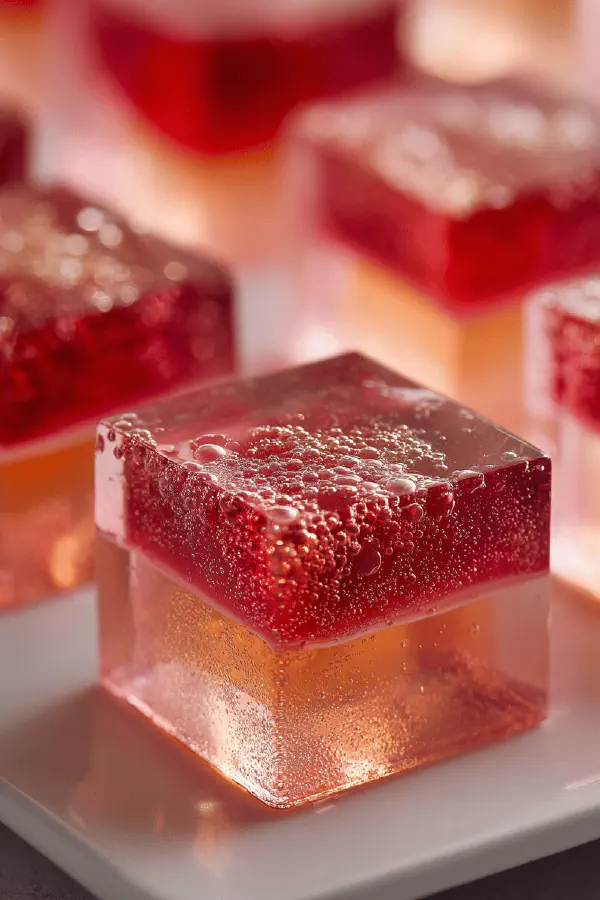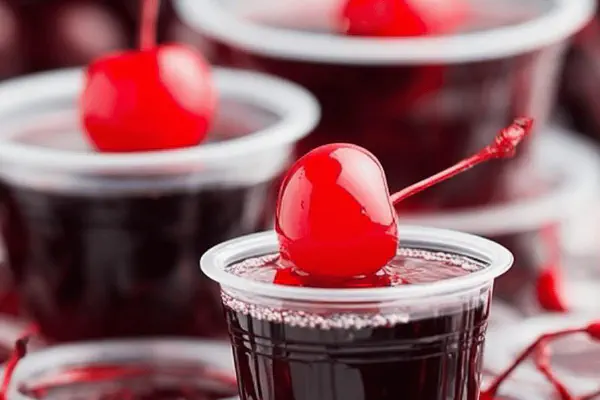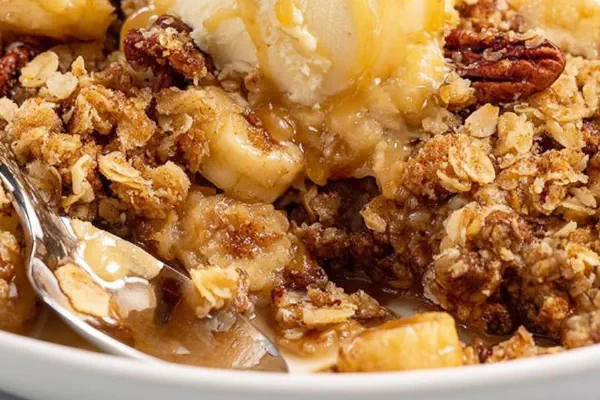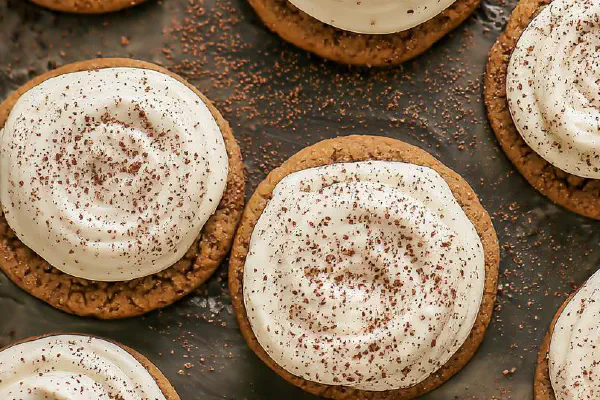Sparkling Gin Jelly Cubes

By Kate
Ingredients
About the ingredients
Method
Technique Tips
Chef's Notes
- 💡 Use powdered gelatin for clarity; agar-agar sets quicker, but won’t yield as creamy a texture. Measure carefully, slight differences impact firmness. Watch water amounts; they determine dilution. If struggle with layers, check for separation—slow pouring is key. Swirl but avoid agitation, bubbles ruin visual.
- 💡 Use plastic wrap for easy unmolding; excess hangings out prevent sticking. Oil sparingly on mold; flavored oils create odd tastes. Ensure no air pockets—tap the pan. Too much pressure can smudge layers. If cutting feels draggy, knife cooling; run under hot water and dry.
- 💡 When storing, airtight containers maintain consistency. Avoid condensation, it leads to sogginess. For longer shelf life, separate layers; keep intact. If jelly too soft, chill longer or increase gelatin next attempt. Too hard means reduce next time. Easy adjustments can save dessert.
- 💡 Pay attention to chilling times; this affects texture integrity. Too quick, mixture might not settle, bubbles rise uncontained. For optimal results, overnight refrigeration recommended, flavors meld beautifully. Don’t rush. Cutting timing critical. Warmth of knife = clean edges. Cold blade tears layers.
- 💡 Experiment with flavored spirits; gin adds depth while vodka lightens. Keep spirits at room temp before mixing, significantly impacts setting. Adjust sugar based on personal sweetness level; too little yields soft jelly. Increase lemon juice for acidity balance. Fresh is best, pasteurized not the same.
Kitchen Wisdom
Can I substitute other spirits?
Yes, blanco tequila works fine; gin brings stronger aroma. Vodka is lighter, best for delicate flavors. Adjust sweetness according to your choice—consider herbs or liqueurs for layered flavors.
Why did my jelly not set?
Check gelatin proportion—too little leads to collapse. Not dissolving completely causes gritty texture. Ensure proper cooling times; layers must hold. Adjust water; changes firmness.
How to store leftover cubes?
Keep cubes in airtight container; separate layers to avoid merging. Remove any moisture buildup, it affects texture. Consume within four days for best experience. If left longer, might lose structure.
What to do with scraps?
If cubes break, crush for parfaits. Mix with prosecco for jelly drinks. Layer with fruits in dessert bowls. Don’t waste! You can get creative with leftovers, add to ice creams or use as cocktail garnish.



